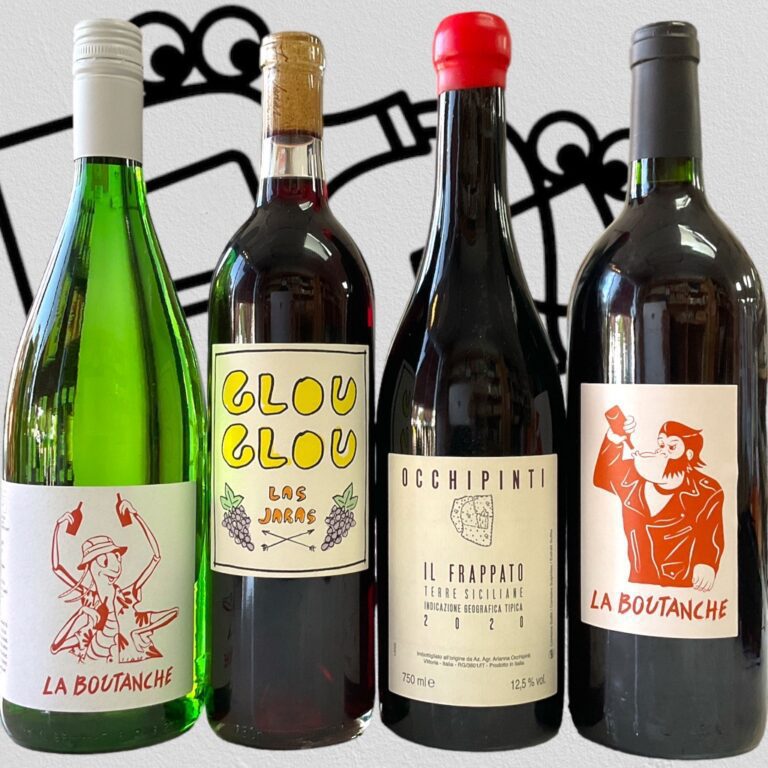
There are two broad categories of wines available to the everyday consumer: those produced by commercial wine companies and those produced by smaller, artisanal producers.
When you boil it down, the main difference is brand recognition, but it helps to know the real differences and what else you’re getting with that familiarity.
Commercial wineries are attempting to produce a consistent brand that consumers can depend on year after year. Independent wineries do the opposite; their vineyards paint the picture of a particular growing season (or vintage) from a specific place.
This substantial difference can be highlighted by their approaches to farming. Some years result in better harvests than others, but that doesn’t necessarily mean the grapes from an abundant harvest will produce a better wine.
Commercial wineries set out to grow as many grapes as possible to maximize their production. They often grow grapes in large, monoculture vineyards that can go on for hundreds of acres.
These vineyards are typically managed using pesticides, herbicides, and other chemicals to ensure that the grapes grow quickly and uniformly. Additionally, commercial winemakers usually use a limited range of grape varieties, focusing on those that are popular and can sell easily.
This can lead to a homogenization of wine styles and a lack of diversity in your local shop.
Independent wine producers, on the other hand, tend to focus on sustainable, organic, or biodynamic farming practices. This means that they work to cultivate healthy, diverse soil, and rely on natural pest management techniques rather than chemicals.
Every winemaking region shows a direct correlation between farming and the resulting wines. By avoiding pesticides and other harmful chemicals, winemakers can reduce their impact on the environment and promote biodiversity in the vineyard.
This can lead to healthier soil and more resilient vines, which in turn can result in higher-quality grapes and a more complex and flavorful wine.
Independent producers also tend to grow a wider range of grape varieties (which might not be profitable for larger companies) which can express the unique characteristics of their terroir and results in a broader range of flavors and styles.
Another important difference between commercial wines and wines made by independent producers is in the winemaking practices used. Commercial wineries tend to rely heavily on technology and industrial-scale equipment to make their wines.
This can result in wines that are consistent in taste and reliable year after year, but may lack the unique character and complexity that can come from more traditional winemaking techniques.
Smaller producers often use these more traditional, hands-on and labor-intensive methods to make their wines. This almost always includes using natural yeast for fermentation, allowing wines to ferment and age for longer periods of time, and using less (if any) additives to change the wine.
These practices can result in wines that are more complex and nuanced, with unique flavors and aromas that are specific to the terroir in which they were grown.
Wines don’t have nutrition facts or an ingredients list. In the U.S., you can legally add over 90 different ingredients to your wine in order to change the flavor, texture and aroma.
Again, if your goal is to paint the picture of your particular vineyard where you grew amazing, healthy grapes- you wouldn’t doctor the wines or cover up their beautiful nuances with chemicals and additives.
Some of the most significant differences between commercial brands and independent wineries is how producers advertise and market their wines. Large commercial wineries often rely on extensive marketing campaigns and advertising with well-known celebrities to promote their wines.
While this can help to create a sense of recognition and trust among consumers, it can also make it difficult for people to make an unbiased opinion on the product. Smaller producers often rely on more personal connections with customers to promote their wines.
They may offer tastings or host events where customers can learn about the wines and the winemaking process. They may also rely on word-of-mouth recommendations and social media to promote their wines.
While this can make it more challenging to get their wines in front of a wider audience, it can also help to build a loyal following of customers who appreciate the unique character and quality of their wines.
If you want to experience the unique character and quality of wines made by smaller, artisanal producers, look for independent wine shops that tend to focus on boutique producers rather than mass-produced brands.
These shops often have knowledgeable staff who can provide guidance and recommendations based on your preferences. Here, on Long Island, most wine shops only purchase from the two big distributors: Empire Merchants and Southern Glazer’s.
Find a shop willing to work with smaller distributors who actually care about their products.
The differences between commercial wines and wines made by smaller producers are numerous. While both types of wines can be enjoyable and have their place, those produced by smaller producers often offer more unique character, complex flavors, and a connection to the land and farming practices used to grow the grapes. Furthermore, by supporting smaller producers, consumers can help to preserve traditional winemaking techniques and support sustainable, environmentally friendly farming practices.






